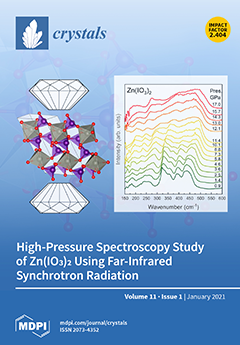The synthesis of amide-based molecules, possessing pre-organized structures, has received significant attention due to their potential applications as molecular receptors and as components of nanomaterials. In this study, four extended tetraamide ligands incorporating ethylene and propylene spacers, namely 1,2-bis[
N,N′-6-(3-pyridylmethylamido)pyridyl-2-carboxyamido]ethane (L1), 1,2-bis[
[...] Read more.
The synthesis of amide-based molecules, possessing pre-organized structures, has received significant attention due to their potential applications as molecular receptors and as components of nanomaterials. In this study, four extended tetraamide ligands incorporating ethylene and propylene spacers, namely 1,2-bis[
N,N′-6-(3-pyridylmethylamido)pyridyl-2-carboxyamido]ethane (L1), 1,2-bis[
N,N′-6-(4-pyridylmethylamido)pyridyl-2-carboxyamido]ethane (L2), 1,2-bis[
N,N′-6-(3-pyridylmethylamido)pyridyl-2-carboxyamido]propane (L3) and 1,2-bis[
N,N′-6-(4-pyridylmethylamido)pyridyl-2-carboxyamido]propane (L4), were successfully synthesized. Further, reaction of L2 and L4, incorporating pendant 4-pyridyl donors as the metal coordinating sites, with cadmium salts, produced two close-packed one-dimensional coordination polymers, {[Cd
3(L2)
4(H
2O)
10](NO
3)
6·12H
2O·CH
3OH}
n and {[Cd(SO
4)(L4)(H
2O)
2]·4H
2O·CH
3OH}
n. X-ray crystallography reveals that the flexible tetraamide ligands fold upon themselves in the coordination polymer structure. As a consequence, the anion pocket in {[Cd(SO
4)(L4)(H
2O)
2]·4H
2O·CH
3OH}
n incorporating the ligand with the propylene spacer was blocked from encapsulating charge-balancing anions, which were involved in bridging the di-cadmium units. Interestingly, a strong interaction between the 2,6-pyridine dicarboxamide moiety with the nitrate anions was found in {[Cd
3(L2)
4(H
2O)
10](NO
3)
6·12H
2O·CH
3OH}
n, showing potential for materials made from these ligands to serve as anion receptors.
Full article





